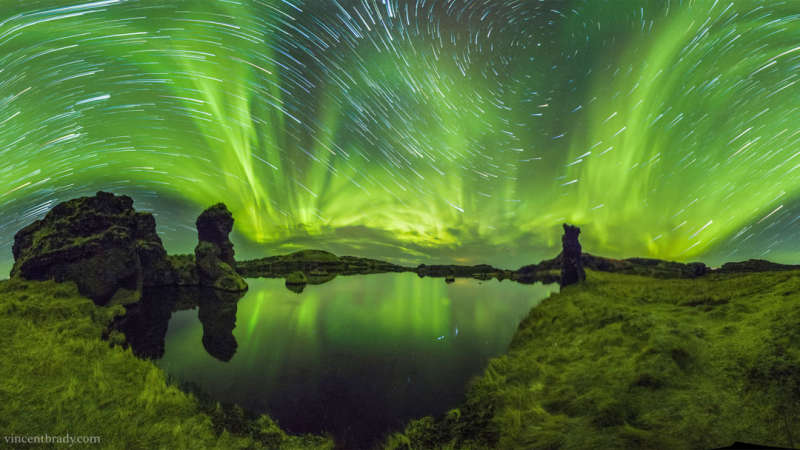
|
Credit & Copyright: Vincent Brady
Explanation:
It was one of the quietest nights of aurora in weeks.
Even so, in northern-
Iceland
during last November, faint
auroras lit up the sky every clear night.
The
featured 360-degree
panorama
is the digital fusion of four wide-angle cameras each simultaneously taking 101 shots
over 42 minutes.
In the foreground is serene
Lake Myvatn
dotted with
picturesque
rock formations left over from ancient lava flows.
Low green auroras sweep across the sky above showing
impressive complexity near the horizon.
Stars far in the distance appear to show
unusual trails -- as the
Earth turned -- because early exposures were artificially faded.
Follow APOD on:
Facebook,
Google Plus,
or
Twitter
|
January February March April May June July August September October November December |
| ||||||||||||||||||||||||||||||||||||||||||||||||
NASA Web Site Statements, Warnings, and Disclaimers
NASA Official: Jay Norris. Specific rights apply.
A service of: LHEA at NASA / GSFC
& Michigan Tech. U.
Based on Astronomy Picture
Of the Day
Publications with keywords: aurora borealis - star trail
Publications with words: aurora borealis - star trail
See also:
